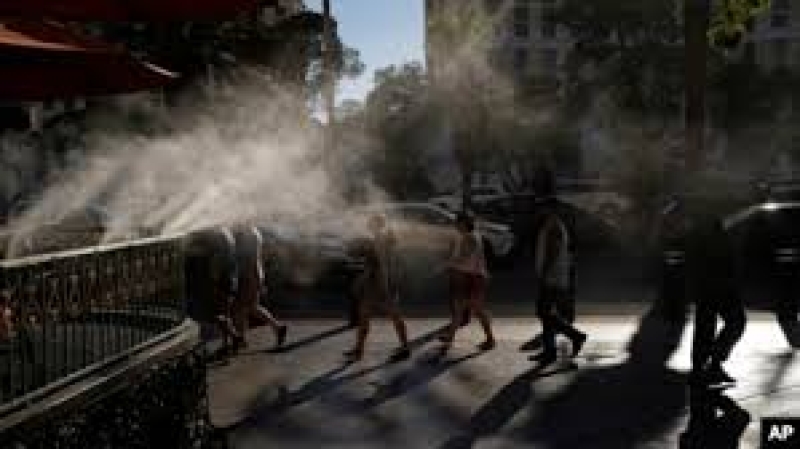- Fakhrul condemns attacks on media, calls for unity, justice |
- 2 cops among 4 hurt in clash outside Indian Assit H.C. in Ctg |
- Inqilab Moncho urges people to avoid violence |
- Hadi’s death: Prothom Alo, Daily Star offices set afire |
- সন্ধ্যায় পৌঁছাবে হাদির মরদেহ, জানাজা শনিবার |
Climate change intensifies US, Mexico heat wave, study finds

A recent study shows that intense and perpetual heat in the United States, Mexico and Central America is the result of human-caused climate change.
Daytime temperatures that cause heat stroke cases in the United States were found to be 35 times more likely and 2.5 degrees higher, said World Weather Attribution, a group of scientists that analyzes the impact of climate change on weather events.
Extreme temperatures are becoming increasingly common.
"The changes we have seen in the last 20 years — which feels like just yesterday — are so strong," said Imperial College of London climate scientist Friederike Otto, who is also the coordinator of the Attribution study team.
The study found that this heat wave is four times more likely to happen now than it would have been in 2000, reports VOA.
"This is clearly related to climate change, the level of intensity that we are seeing, these risks," said Karina Izquierdo, a co-author and an urban adviser based in Mexico City with the Red Cross and Red Crescent Climate Center.
There have been 125 heat-related deaths this year in Mexico, according to the country’s health ministry. Doctors said high nighttime temperatures are what makes heat waves so deadly.
The Sonoran Desert reached the scorching temperature of 51 degrees Celsius (123.8 degrees Fahrenheit) last week, the hottest day in Mexican history, said study co-author and Climate Central meteorologist Shel Winkley.
But at night, the temperatures were 1.6 degrees Celsius higher than normal, said Otto, the climate scientist. Unusually hot nights are also 200 times more likely, she added.
The immediate meteorological cause of that heat wave was a high-pressure system located over central Mexico that blocked cooling storms and clouds.
Between June 1 and June 15, more than 1,200 daytime high-temperature records were tied or broken, along with nearly 1,800 nighttime high-temperature records, according to the National Center for Environmental Information.
Tropical Storm Alberto formed Wednesday and made landfall in Mexico. The area has been experiencing drought and water shortages along with unbearable heat.

